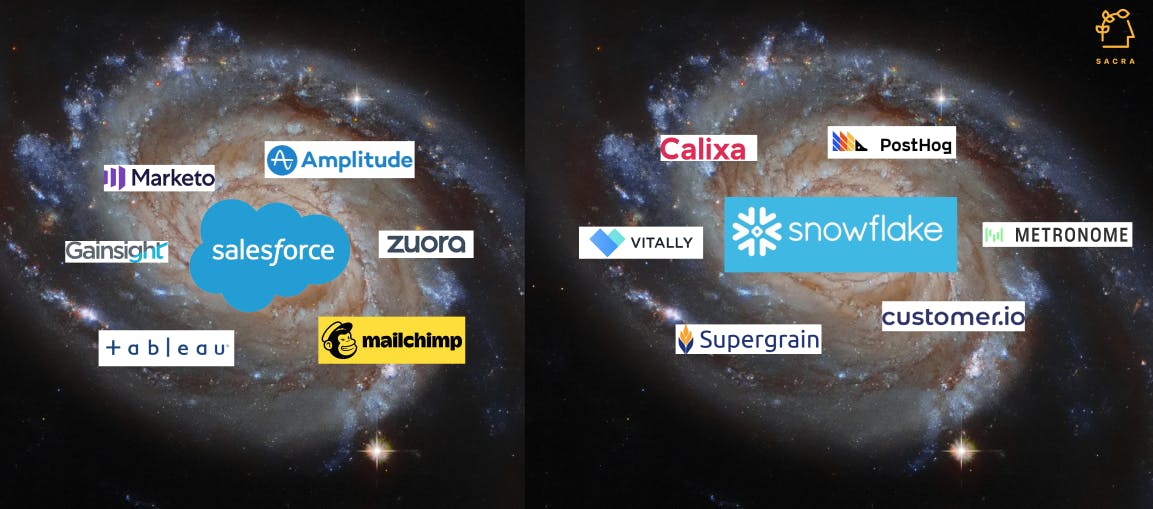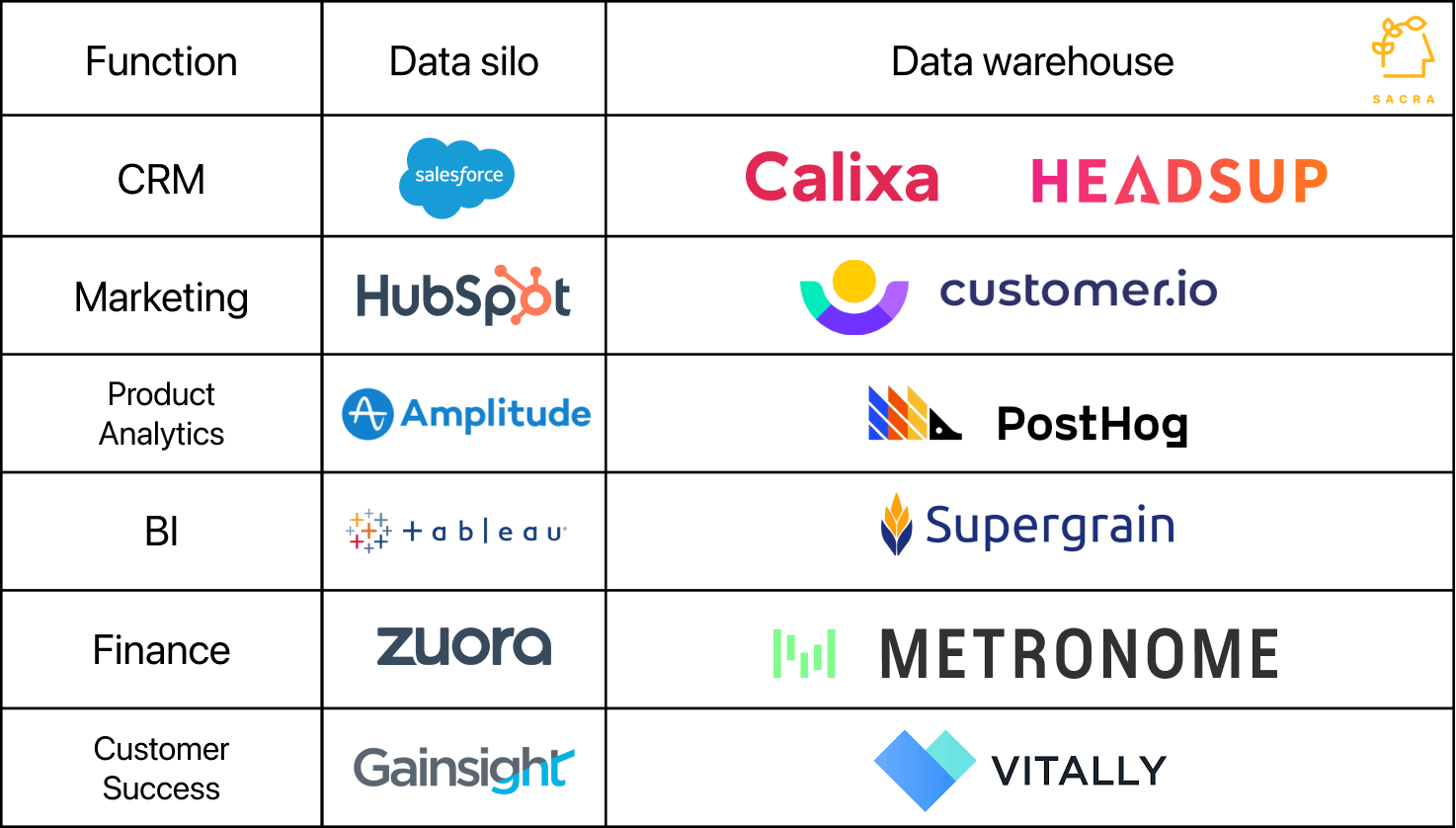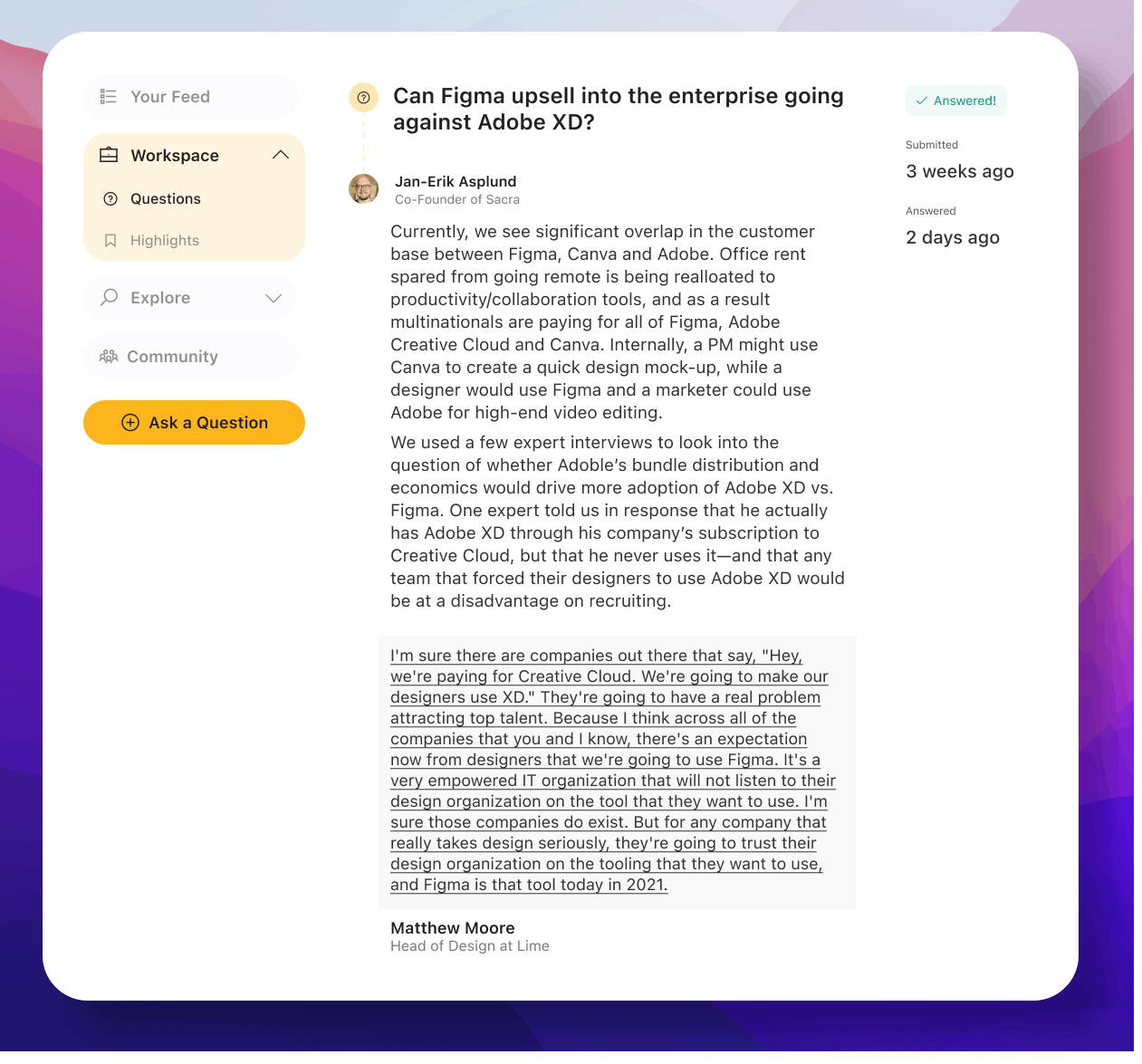Hi everyone 👋
Sign Up Today!
To get these right in your inbox
In sales-driven SaaS, the CRM is the money-maker where deals get closed. Over time, it becomes the center of gravity for data in the organization as prospect & customer data get enriched by whatever data is needed to generate revenue. Sales & marketing teams shuttle data back and forth between your app’s database and the various SaaS tools you use using Segment and Zapier, with the CRM providing the ‘best’ (but not complete) picture of the customer.

With the modern data stack, the data warehouse displaces Salesforce as the center of gravity of data in the company—and that gives a point of leverage for a new breed of tools to displace incumbents across all go-to-market SaaS categories and beyond. These tools promise to break down data silos with (1) flexible data models that integrate data from your warehouse by design and (2) custom workflows based on that rich context that non- or less-technical team members can build.

What's forming is an ecosystem of warehouse-centric apps that's growing reflexively, with the data warehouse enabling challenger SaaS apps, which in turn extend the functionality of the warehouse and justify the switch to the modern data stack.
One key category is of course CRM. We talked to Thomas Schiavone, the CEO and co-founder of Calixa to learn how he's thinking about displacing Salesforce with a data warehouse-centric CRM:
You need to expose the actual product usage and then give a way for people inside the organization to figure out who's doing what, prioritize those people, and take action on them all in one place… [but] most companies don't want to devote product and engineering resources to this problem. And I think we have an opportunity to build an opinionated view on this data and build a place where customer teams can really understand who's using the product, how they're using it, and build it into the workflow of how customer teams function. (link)
If all you want is to just pipe data into Salesforce, you should be using reverse ETL. That's probably the better tool for now… [however] we feel we can give a better opinionated view if we give this direct warehouse connectivity and treat the warehouse as a first-class integration… just around how you build out your objects and do the syncing and all that sort of stuff. (link)
For medium and larger companies, the insertion point is sales, because it's a very clear buyer, somebody you can talk to… [but] what happens is you get inside a company, and the success team over there says, "Well, that's pretty cool."... And then the support team sees the views that these other people have and is like, "Oh, I want that."... Sales is [just] a specific implementation of the platform we're building. (link)
The future of BI with George Xing, CEO of Supergrain

Today, with the proliferation of SaaS and the growing hunger from end users for product and customer data, that’s shifted—analytics are now being reverse ETLed into a whole landscape of financial software, Jupyter notebooks, BI dashboards and anomaly detection tools.
The upshot is far better access to data but also constantly conflicting definitions—in the most drastic case, resulting in teams at publicly traded companies not being able to agree on last month’s revenue numbers.
Building B2B SaaS for the modern data stack
Based on investor interest, we've done a number of conversations with founders building in the 'modern data stack' space, here are our 3 favorites:
- Why Salesforce is Census's top destination: Sean Lynch, co-founder at Census
- How Twilio does PLG sales with its internal tool 'Monkey': Thomas Schiavone, co-founder and CEO at Calixa
- The opportunity to rebuild the go-to-market stack from the ground up: Earl Lee, CEO and co-founder at HeadsUp
Netlify, Vercel and the future of Jamstack
We've spent the last 3 months learning about Jamstack by talking with founders and developers who build for the ecosystem, here are our 3 favorites:
- How Heroku inspired Netlify: Jason Lengstorf, the VP of Developer Experience at Netlify
- Jamstack's lack of enterprise adoption: Jamund Ferguson, senior engineer at PayPal
- The hybridization of Jamstack: Bud Parr, founder of the New Dynamic
Product update: On-demand research
We're building an on-demand research product to enable you to ask your own questions and have them answered within 10 business days by our research team.

If you’re interested in becoming a design partner for this product, just reply to this email.


